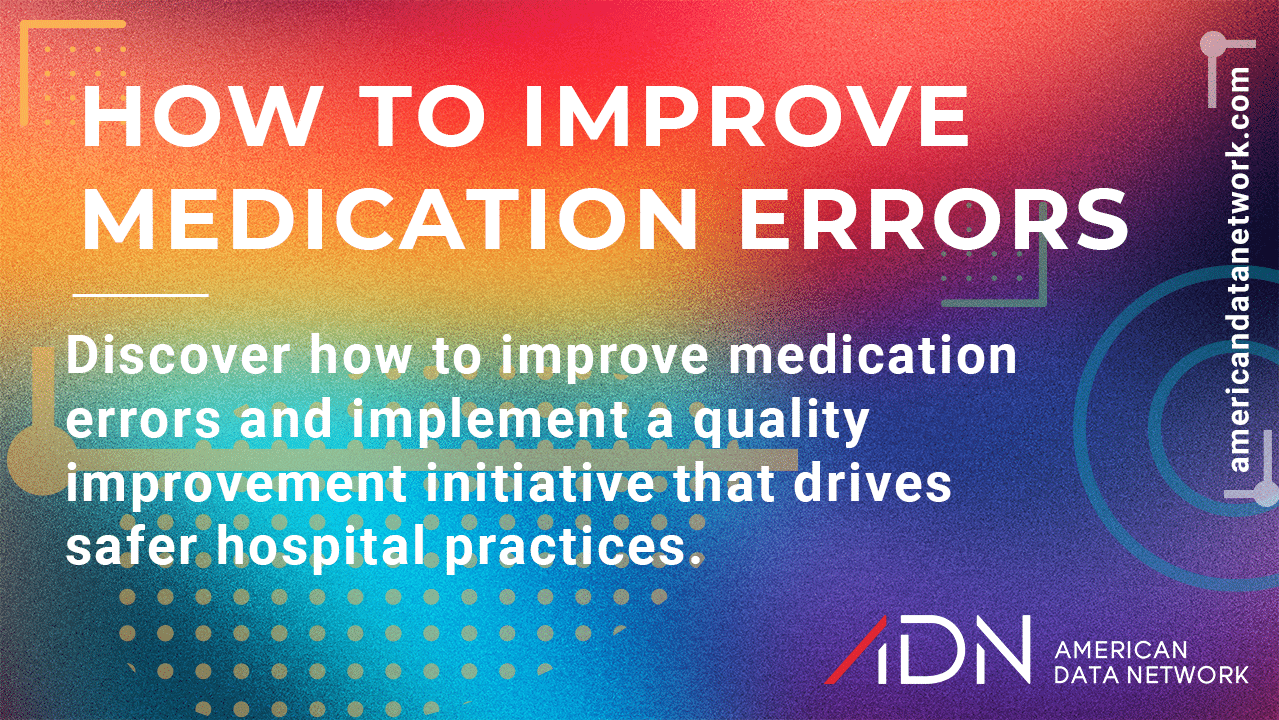How to Improve Medication Errors in Hospitals
Medication errors remain a critical patient safety issue. Learn actionable strategies for quality improvement in medication errors, from reporting enhancements to tech solutions like CPOE and BCMA.
Table of Contents
Hospital administrators often express concerns about patient safety and seek effective strategies for how to improve medication errors. These types of errors cause harm to about 1.3 million people annually on a global scale and are responsible for one death daily in the United States, according to the World Health Organization. The worldwide impact of medication errors totals about $42 billion per year, the organization reports.

Understanding the Scope for Improving Medication Errors
“The downstream effects include physical and emotional harm of patients and family members, losing trust in the healthcare system, and increased healthcare costs,” says Farzana Samad, a pharmacist who is the health scientist administrator at the Agency for Healthcare Research and Quality. (Statistics source: WHO).
In healthcare settings, improving medication errors requires addressing various causes such as wrong administration, incorrect orders, improper holds, wrong doses, improper storage, omissions, duplicates, and lack of monitoring, Samad explains. In hospitals, factors such as culture, technology, processes, and available resources influence medication error rates.
Why Underreporting Impacts a Quality Improvement Project for Medication Errors
Knowing how to improve medication errors begins with measuring their occurrence nationally. However, underreporting remains a significant barrier. In addition, reporting requirements vary between states, and a centralized database doesn’t exist, says Christina Michalek, a pharmacist and director of Membership and Patient Safety Organization (PSO) at the Institute for Safe Medication Practices (ISMP) and administrative coordinator for the Medication Safety Officers Society.
Reporting errors is vital for designing a quality improvement project for medication errors. Understanding systemic gaps allows hospitals to implement best practices that prevent harm, Samad notes. Lower reported rates might reflect not only ineffective strategies but also fear of reporting or cumbersome reporting systems.
Even errors that don’t reach patients offer lessons for a safety improvement plan for medication errors. “Severity bias might cause underreporting,” Samad explains, underscoring the need for a cultural shift toward learning and transparency.
Why Benchmarking Fails in Quality Improvement for Medication Errors
Although progress exists, quantifying medication error improvements remains challenging. Many healthcare systems mistakenly rely on benchmarking comparisons to gauge safety improvements.
Michalek cautions: “There is no acceptable incident rate for medication errors.” Instead of focusing on how many errors are reported, organizations should prioritize the quality improvement initiative for medication errors — analyzing error types and improving systemic weaknesses.
Significant variability exists across institutions in definitions, thresholds, and reporting habits. “The easiest way to improve your error rate is to stop reporting—and that’s certainly no way for organizations to learn and improve,” Michalek adds.
Best Practices for a Safety Improvement Plan for Medication Errors
Instead of benchmarking, ISMP recommends a proactive safety improvement plan for medication errors that focuses on actionable steps:
- Boost reporting of close calls (good catches).
- Educate leadership and the board about the importance of reporting.
- Focus on system improvements based on real-world events.
Increasing the number of safety interventions demonstrates a quality improvement initiative for medication errors that fosters a true culture of learning and safety.
Technology’s Role in Decreased Medication Administration Errors and Quality Improvement
Hospitals can strengthen their quality improvement for medication errors by implementing critical technology tools. Katie Stewart of The Leapfrog Group emphasizes the importance of:
- Computerized Provider Order Entry (CPOE): Used to catch common prescribing errors. Studies show CPOE reduces harm from prescriber errors by up to 55%.
- Bar Code Medication Administration (BCMA): Scanning medications at the bedside ensures the right drug is administered at the correct time and dose.
Two measures in the Leapfrog Hospital Safety Grade reveal progress. In 2018, only 65.6% of hospitals met CPOE standards, but by 2024, that number rose to 88.1%. Similarly, BCMA adoption jumped from 47.3% in 2018 to 86.9% in 2024.
These systems are essential components of any quality improvement project for medication errors.
Staffing Solutions to Support Quality Improvement Medication Errors Initiatives
Beyond technology, staffing innovations help with decreased medication administration errors quality improvement. A study in the Journal of Nursing Management highlights the role of pharmaceutical technical assistants on nursing wards.
Their support freed up nurses for direct patient care, which nurses perceived as contributing to fewer errors. “Clear communication procedures and continuity were vital for success,” researchers concluded.
This staffing model provides a strong, people-centered strategy for hospitals aiming for sustained quality improvement medication errors outcomes.
How AI Technology Boosts a Quality Improvement Initiative for Medication Errors
Emerging tech, such as AI-enabled wearable cameras, offers another layer of protection. At the University of Washington, Dr. Kelly Michaelsen explored using wearable cameras to detect medication errors during administration.
Serving as a “second set of eyes,” the AI system could identify the contents of a syringe before injection, reducing errors caused by distraction or time pressure. Michaelsen stresses the importance of coupling technology with a culture of safety — minimizing interruptions and ensuring providers have sufficient time for checks. (Source: https://www.nature.com/articles/s41746-024-01295-2)
AI applications could become a powerful part of future safety improvement plans for medication errors.


